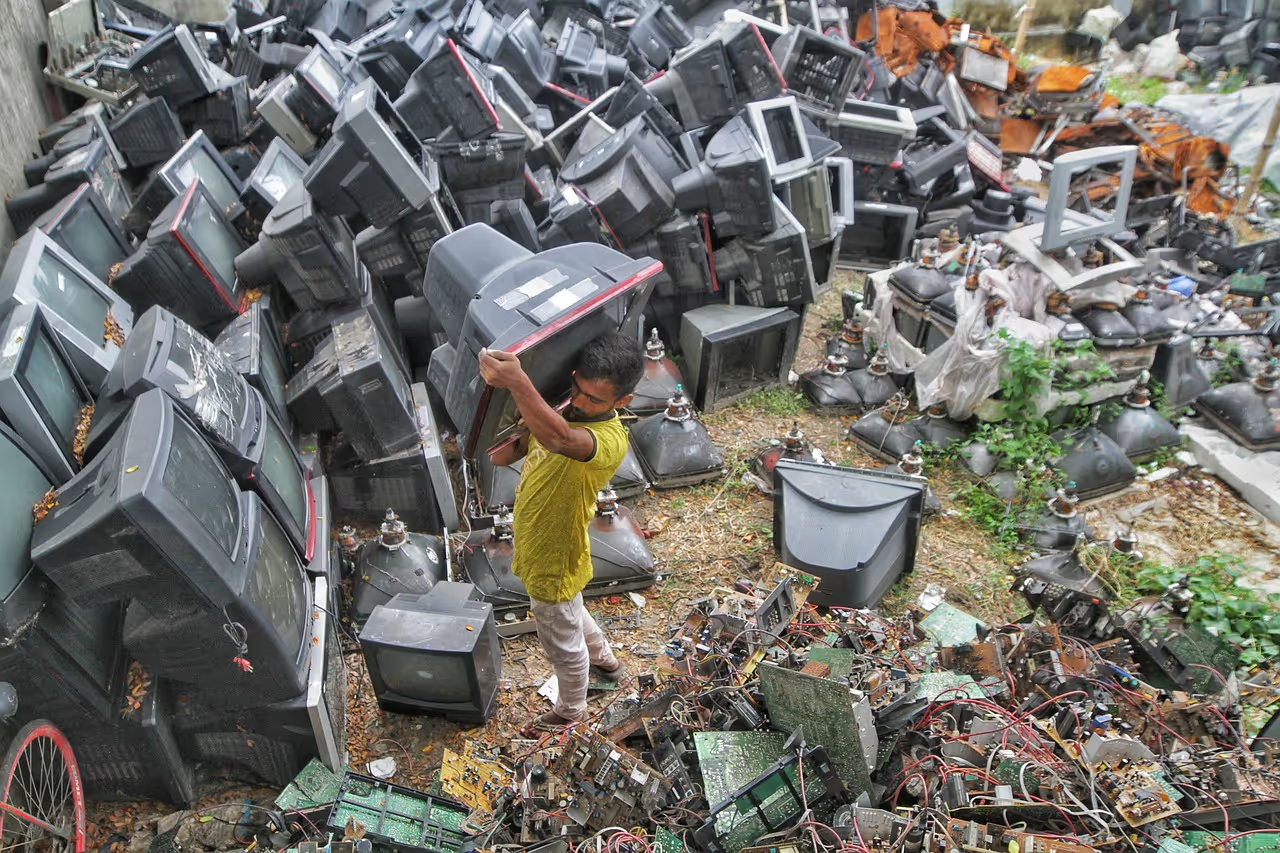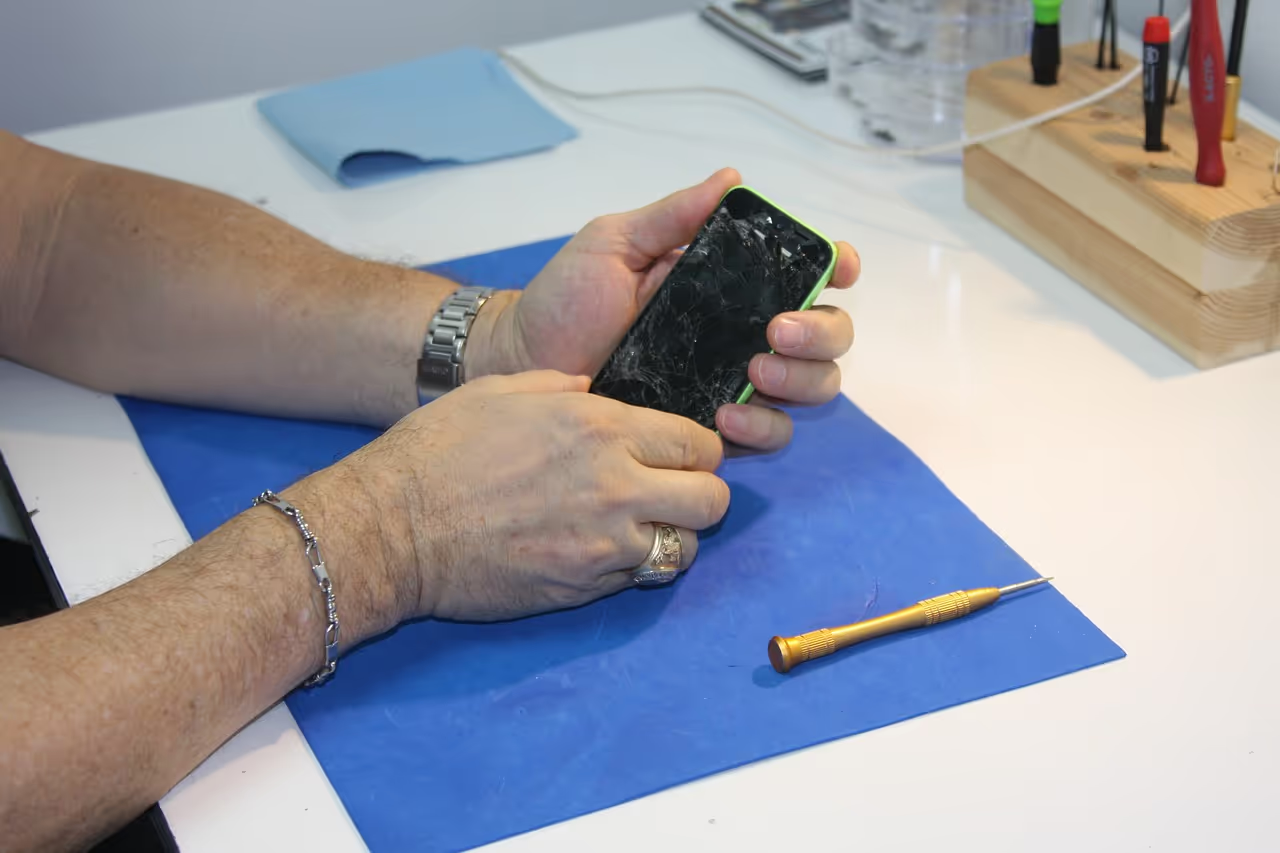


The UK was recently highlighted as a firm candidate for becoming the largest contributor of e-waste across Europe, with levels predicted to reach 24.5 Kg of e-waste, per person, by 2024.
The notion of upgrading to a new smartphone model every few months or replacing a perfectly good laptop with the latest technology has become standard practice in our modern lives, but this is contributing to a much bigger problem.
So, what constitutes e-waste, why is it a problem for the planet, and how can we do better moving forward?
The term e-waste, also known as Waste Electrical and Electronic Equipment (WEEE), refers to all those electronic devices and appliances that have reached the end of their useful lifespan.
Rapid technology innovation and replacement has given rise to a fast-growing e-waste disposal problem, damaging fragile ecosystems and the environment as a whole.
Tech innovation is necessary, and indeed, in business environments, it’s a vital component of achieving more and working more efficiently. Still, our throwaway culture prioritises convenience in a way that encourages disposability.
With companies possessing so many electronics, from computers and printers to telephones and air conditioners, positive changes must be made to these processes to protect our planet.
Recycling is preferable to simply throwing an item in the bin, but it has its own problems.
Many nations export their electronic waste to other countries where labour laws leave workers at processing plants unprotected. Entire computer systems are sent to the likes of India, China and Africa, where entire villages, even children, are lumbered with sorting the components.
Exact export figures are difficult to source, but an estimated 1.8 million metric tons of e-waste were exported worldwide in 2019. To better understand this figure, if you consider that an adult blue whale, the largest animal on the planet, weighs up to 200 tonnes, this is equivalent to the total weight of 9,000 blue whales.
Even more alarming is that over 80% of this is classified as hazardous waste, involving elements such as cadmium, lead, and mercury, to name just a few. These elements all provide ongoing dangers to the environment if not carefully managed.
Businesses may believe it to be too time-consuming, inconvenient and even costly to recycle electronics properly, which only encourages a throwaway culture.
In fact, as many as 95% of businesses don’t recycle their computer equipment. The expenses associated with recycling e-waste and a lack of uniform regulations across various countries and regions make the process less accessible and inconsistent in approach.
The world doesn’t yet have a suitable level of infrastructure to sort the quantity of electronic waste we’re producing globally, nor do products provide enough information for consumers to enable them to avoid landfills.
Electronics today are designed to have a short lifespan, but if we don’t correctly dispose of them, they can negatively impact our environment.
E-waste presents a threat to the environment, wildlife and humans in several ways:
Many people don’t realise that the production of electronics requires valuable raw materials and precious metals, such as cobalt and indium.
Recycled metals from e-waste are up to 10 times more energy efficient than virgin metals, and extracting metals from discarded electronics produces up to 80% fewer emissions than traditional mining from the ground.

Our throwaway culture can’t be stopped overnight, but there are steps businesses can take to do their part for future generations and prevent this habit from advancing further.
One of the most significant issues businesses face today is the inclusion of planned obsolescence in the products they buy.
This encourages repeat purchasing and increases waste production. But the more businesses can be aware of this tactic from manufacturers, the better equipped they’ll be to source their tech from reputable vendors who support a circular economy or encourage the recycling and repurposing of their products.
A circular economy aims at eliminating waste and maximising resource reuse. This automatically creates a more continuous cycle away from the use once, then discard as waste mindset, to extract maximum value and product lifespan.
MPB, for example, employs an entirely circular business model. They buy, sell, and trade used photography kits and continue a circular approach, from their packaging to the distribution of their products.
Similarly, Accenture uses advanced technologies and partners with the likes of Amazon Web Services and Mastercard to enhance a circular supply chain, empowering customers to make greener choices.
Working with the right manufacturers for your business means striking a balance between doing your due diligence and fitting into your budget. There are several accreditations you can look for to support your decisions, such as B Corp, Planet Mark and Responsible 100.
These provide a non-biased perspective into the way a business conducts itself and its processes, so you have confidence in them without the worry of greenwashing.
For example, if a business has green credentials that prove a zero waste to landfill status and prioritises sustainable practices, this will then feed into your own business to help you do the same.
When electronics break down, the temptation is to throw them out and start over, but for eco-conscious businesses, the sustainable option is to repair them. Keeping devices in use as long as possible is one of the best ways to reduce e-waste.
Similarly, repairing electronics is often more budget-friendly than replacement. With some basic troubleshooting, many devices can be given a second life at minimal cost. Choosing repair over replace minimises the disposal of still-usable products, conserves valuable resources and ensures hazardous materials are not so exposed to the environment.

Electronic devices have so much value, but most of us don’t know what to do with them once they’re no longer needed. On the rare occasion we recycle, there’s a chance it’s not being treated properly, so we need to take a step back and rethink how we buy and care for electronics.
The solution is clear - we must choose to repair and reuse. By maximising product lifespan through simple fixes and maintenance, we keep e-waste out of landfills and save natural resources for the future.
Working with sustainable brands and recyclers helps ensure our electronics are handled properly throughout their purposeful lifespan.
When we reimagine how we design, use and discard technology, we remake our future in the process. One repaired device at a time, we build an eco-friendly tomorrow for all. Our planet’s health depends on the choices we make today.
New technology will always come along, but that is no reason to discard the devices we already have. With some maintenance and care, many can serve us well for years longer. When electronics break, think of repair first.
You may just save your business money, and our planet will thank you.

